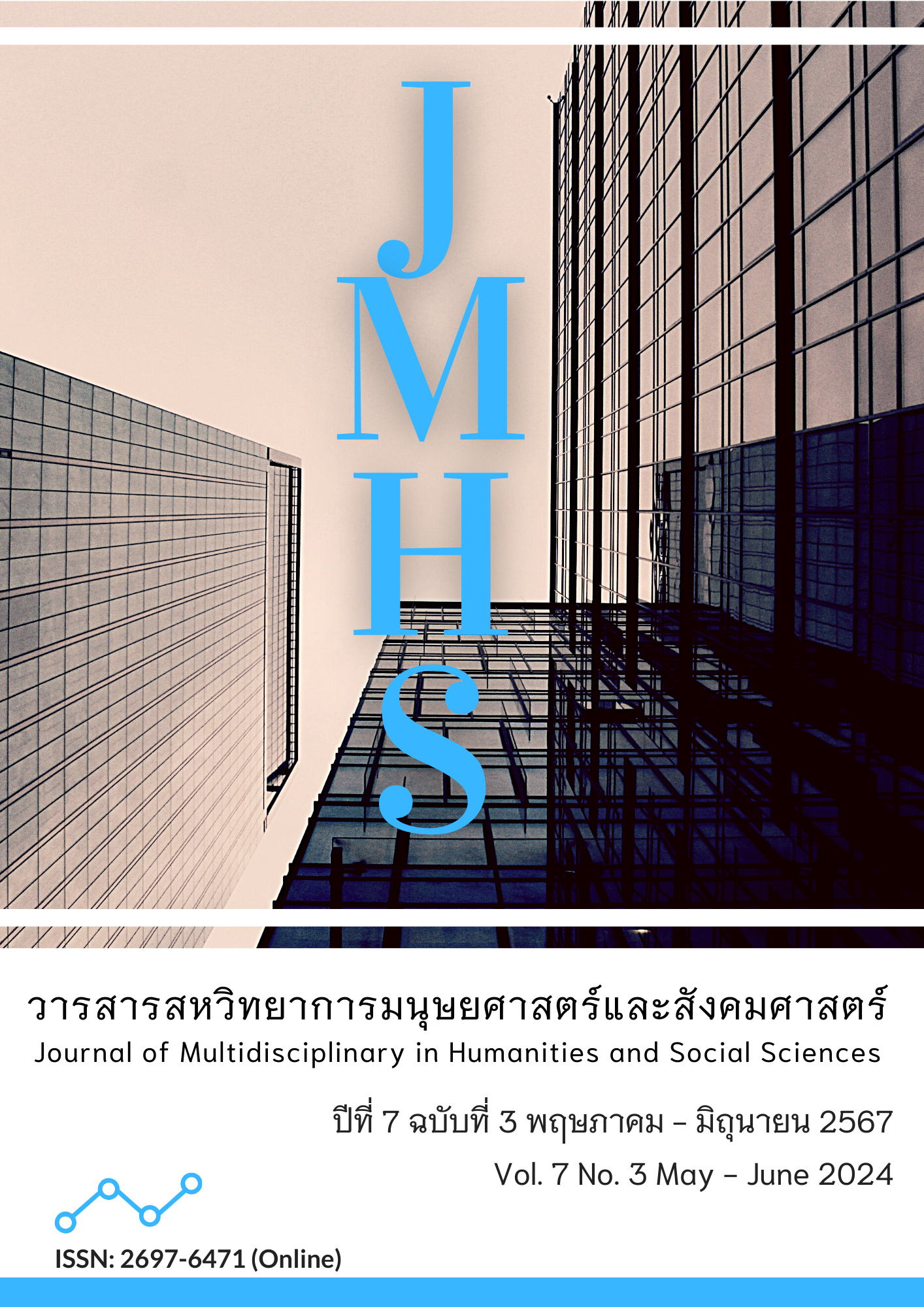Perceptions of Non-Zhuang Residents in Guangxi Towards Zhuang Arts: Scale Development and Validation
Main Article Content
Abstract
This article aimed to study the perceptions of non-Zhuang residents in Guangxi towards Zhuang arts and develop a scale named "Perceptions of Non-Zhuang Residents in Guangxi Towards Zhuang Arts." The sample consisted of non-Zhuang residents in Guangxi, China. The instrument for collecting data was a Chinese online questionnaire collection tool called "Questionnaire Star." Analysis of data through descriptive statistics and content analysis. The research results were found as follows: identified five latent factors through exploratory factor analysis. Each latent factor contained five test items. However, the study also revealed limitations and challenges, including an incomplete theoretical background and deficiencies in the dimension setting. Hence, suggestions for future research were proposed, emphasizing the importance of comprehensive theoretical review, integration of theoretical and empirical studies, exploration of cross-cultural applicability, and refinement of measurement instrument design. Through these recommendations, it is hoped that future researchers can further refine and deepen the findings of this study, thereby advancing knowledge in this field.
Article Details

This work is licensed under a Creative Commons Attribution-NonCommercial-NoDerivatives 4.0 International License.
Views and opinions appearing in the Journal it is the responsibility of the author of the article, and does not constitute the view and responsibility of the editorial team.
References
Berry, J. W. (1997). Immigration, Acculturation, and Adaptation. Applied Psychology: An International Review, 46(1), 5-68.
Brown, R. (2000). Social Identity Theory: Past Achievements, Current Problems and Future Challenges. European Journal of Social Psychology, 30(6), 745-778. https://doi.org/10.1002/1099-0992(200011/12)30:6<745:Aidejsp24>3.0.Co;2-o
Chieffi, V., Pichierri, M., Peluso, A. M., Collu, C., & Guido, G. (2021). The Effect of Knowledge Type and Culture on Arts Audiences’ Propensity for Experience-Sharing. Arts and the Market, 11(3), 240-257. https://doi.org/10.1108/aam-08-2020-0030
Drew, C. (2023, July 30). Cultural Background: Definition, Examples & Features. Helpful Professor. https://helpfulprofessor.com/cultural-background-examples/
Gyegwe, A. G., Anaso, K., & Haruna, C. (2016). The Role of Art in Traditional Cultural Patterns. Arts and Design Studies, 39, 31-34.
Hair, J. F., Anderson, R. E., Babin, B. J., & Black, W. C. (2010). Multivariate Data Analysis: A Global Perspective. (7th ed.). New Jersey: Pearson.
Huang, W., Song, F., Zhang, S., & Xia, T. (2022). Influence Of Deep Learning-Based Journal Reading Guidance System on Students' National Cognition and Cultural Acceptance. Front Psychol, 13, 950412. https://doi.org/10.3389/fpsyg.2022.950412
Julian, H. S. (1972). The Theory of Culture Change: The Methodology of Multilinear Evolution. Illinois: University of Illinois Press.
Lopez-Rodriguez, L., Halperin, E., Vazquez, A., Cuadrado, I., Navas, M., & Gomez, A. (2022). Awareness of the Psychological Bias of Naive Realism Can Increase Acceptance of Cultural Differences. Pers Soc Psychol Bull, 48(6), 888-900. https://doi.org/10.1177/014616722110 27034
Lee, O. N., & Song, C. S. (2021). The Effect of Multicultural Acceptance on Social Problem Solving Among University Students. Journal of Multicultural Counseling and Development, 49(3), 165-174. https://doi.org/10.1002/jmcd.12222
Schwartz, S. J., & Zamboanga, B. L. (2008). Testing Berry's Model of Acculturation: A Confirmatory Latent Class Approach. Cultural Diversity and Ethnic Minority Psychology, 14(4), 275–285. https://doi.org/10.1037/a0012818
Shum, K. K.-m., Chan, W. W. L., Tsoi, E. W. S., & Lam, S.-f. (2020). Being The Minority Hurts or Helps? A Moderated Mediation Model of Group Membership, Cross-Cultural Acceptance, and School Adjustment. Group Processes & Intergroup Relations, 24(8), 1355-1371. https://doi.org/10.1177/1368430220952137
Tajfel, H. (1972). Social Categorization. English Manuscript Of La Categorization Social. In S. MoscovRCE (Ed.), Introduction a la sychology social (Vol. 1, pp. 272–302). Paris: Larousse.
Trinh, N. T. H. (2023). Higher Education and Its Role for National Development. A Research Agenda with Bibliometric Analysis. Interchange 54, 125–143. https://doi.org/10.1007/s10780-023-09493-9
Whitaker, M. C. (2019). Us and Them: Using Social Identity Theory to Explain and Re-envision Teacher–Student Relationships in Urban
Schools. The Urban Review, 52(4), 691-707. https://doi.org/10.1007/s11256-019-00539-w
Yang, L., & Tian, Y. (2020). Art Design of Urban Public Space Based on Marine Culture. Journal of Coastal Research, 106(sp1). 427-430. https://doi.org/10.2112/si106-096.1


